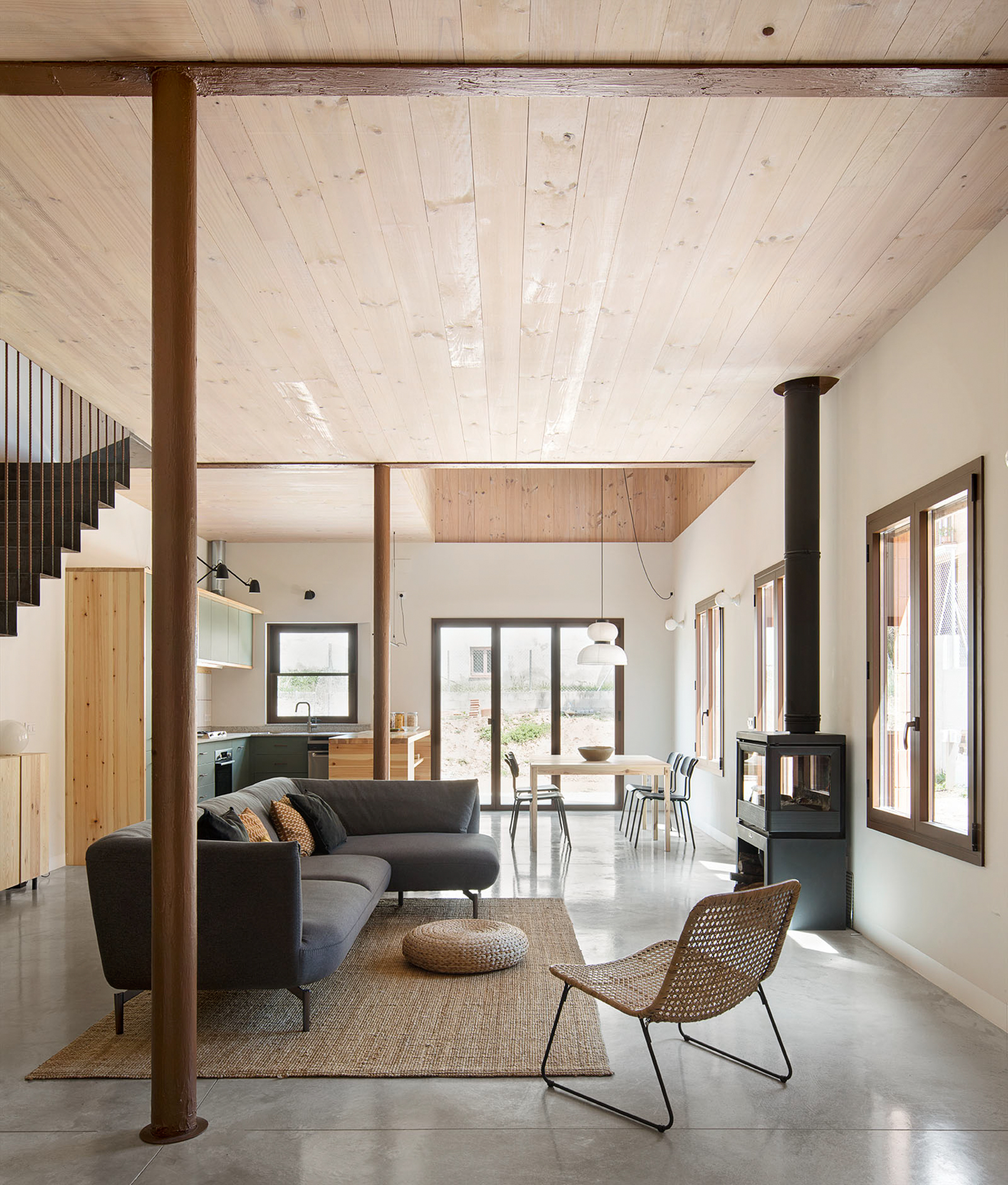Holzhaus im Traditionskleid: Casa MDN bei Barcelona von Nook Architects und Amomicasa

Foto: Del Rio Bani
To leave the city in favour of a home-based office in the countryside − ever-increasing numbers of young families share this dream. The clients of Casa MDN have realized the dream in the small town of Mediona, which is located west of Barcelona. They acquired two building lots at once; these had originally been slated for row houses and, according to the building plan, both lots were to be built on. The new structure by Nook Architects and Amomicasa fulfils this requirement but avoids the exposed residential location at the corner of the road. Instead, the architects used this space for the garage, which seems to grow seamlessly from the unplastered ground floor of the house. An uninformed observer might find that Casa MDN appears incomplete on the one hand and tradition-bound on the other. Of the three storeys, only the lowest extends over the total area of the house. Farther up, two multi-storey atria open up, one above the dining area on the ground floor and another in the middle of the building, between the first and second upper levels. Taken together, these two spaces enable diagonal lines of view from the dining area up to the roof. The various building materials from which the walls and ceilings are made are visible here. Over the concrete floor slab, the ground floor consists of vertically perforated bricks; these have been left unplastered on the exterior of the house. Inside, the masonry has a facing shell that offers additional insulation and also makes the wall airtight as required. The steel supports and joists that hold up the living-room ceiling, as well as the stairway handrails, feature a copper-coloured coating. Upstairs, the look changes radically: here, walls and ceilings alike consist of unclad CLT panels. The open sectioning of the house, with its large atria, is intended to facilitate cross-ventilation. This and the traditional window blinds allow the house to be kept cool in the summer months. Subfloor heating provides warmth in the wintertime.

















